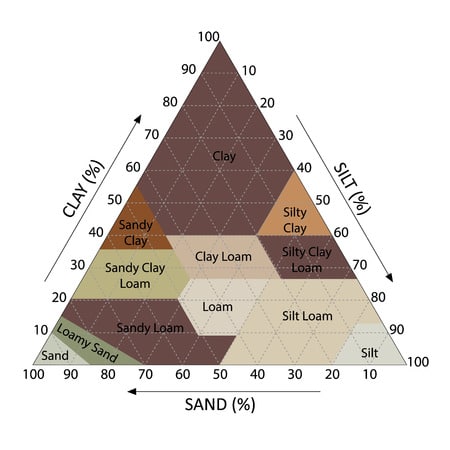
Before planting, it is best to select trees that are tolerant of clay soils, then planting them correctly.
Clay soils are usually alkaline with pH ranging from 7 to 8.5. It is important to have the soil examined before planting because some plants grow with specific pH preferences, before selecting plants that will flourish in your soil conditions.
Guidelines for planting trees in clay soil.
- Dig a hole 12 inches wider than a root ball, and then leave 6inches of space on all sides.
- In thick clay-based soils that drains inadequately, dig a shallow hole so the root ball sits about 3 to 6 inches. Before planting tree, loosen 3 inches of soil in the base of the hole. Remove container by laying plants sideways and sliding the container from the plant.
- Carefully place plant into the hole, ensure that the tree is placed in good upright position. Fill the space around the root ball with soil that has been mixed with peat moss; add manure to the space around the root ball with the mixed existing soil. Liquid or granular upstart can be added at this time as well.
Clay needs added preparation to help plants grow. Here are some tips to help newly planted plants grow better.
- Never work clay soil when it is wet or bone dry.
If the soil is too wet, it will form hard clumps. If it is bone dry, it will shatter into dust hence turning into mud, and to brick when it dries. Dry soil should be watered and allowed to soak in for a day or two.
Examine the soil by compressing the soil into a lump, place a finger into the lump. If it dents like clay, it is too wet. If it crumbles, then it is perfect to work with. - Improve the existing soil
Filling the hole with rich soil can cause root rot. Rich soil will take in water quickly, but very slow to drain away through heavy clay soil. When an existing soil is enhanced, water effectively moves from the improved soil to the existing soil, excluding blue clay. Roots will not thrive in blue clay due to lack of oxygen.
Hydration
When you water, always allow the water to soak the entire ball of soil in the hole. Afterwards let the surface dry at watering interval. During hot weather planting, water is needed almost every day, but it is vital to let the soil surface dry out between watering to avoid soil diseases. After few of weeks of watering, the plant should need watering less often as the root system grows wider.
Water should be administered to all newly-planted shrubs and trees regularly or as needed throughout the entire first season. This is important because the plant’s root system is not yet strong enough to the support the plant. Nevertheless, avoid watering excessively. Remember to check the moisture content of the surrounding soil before watering.
The most frequent causes of tree failure are over watering.
All trees should perform optimally with regular fertilization and appropriate water watering routine. Note that tree planting start in early spring. Overall it is best to stop fertilizing trees in August. This gives the plant time to slow down and harden before winter.

Thanks for writing this. I have had people ask me about clay soil and I’m not well-versed in this area. This gives me a starting point to learn more about planting in clay soil. I like how your site has a variety of blogs covering eclectic as well as general topics. It makes for interesting reading and useful information.